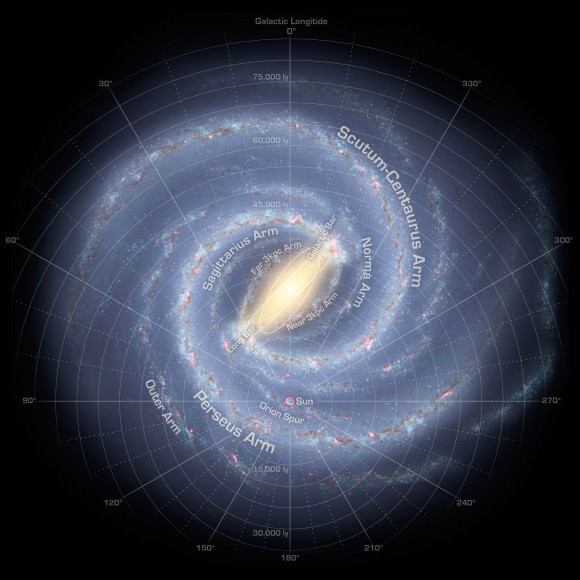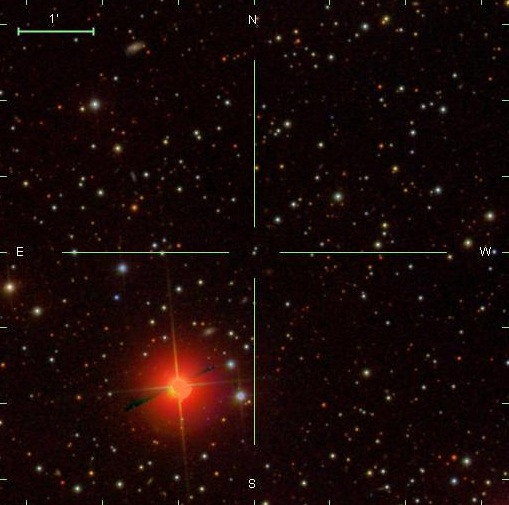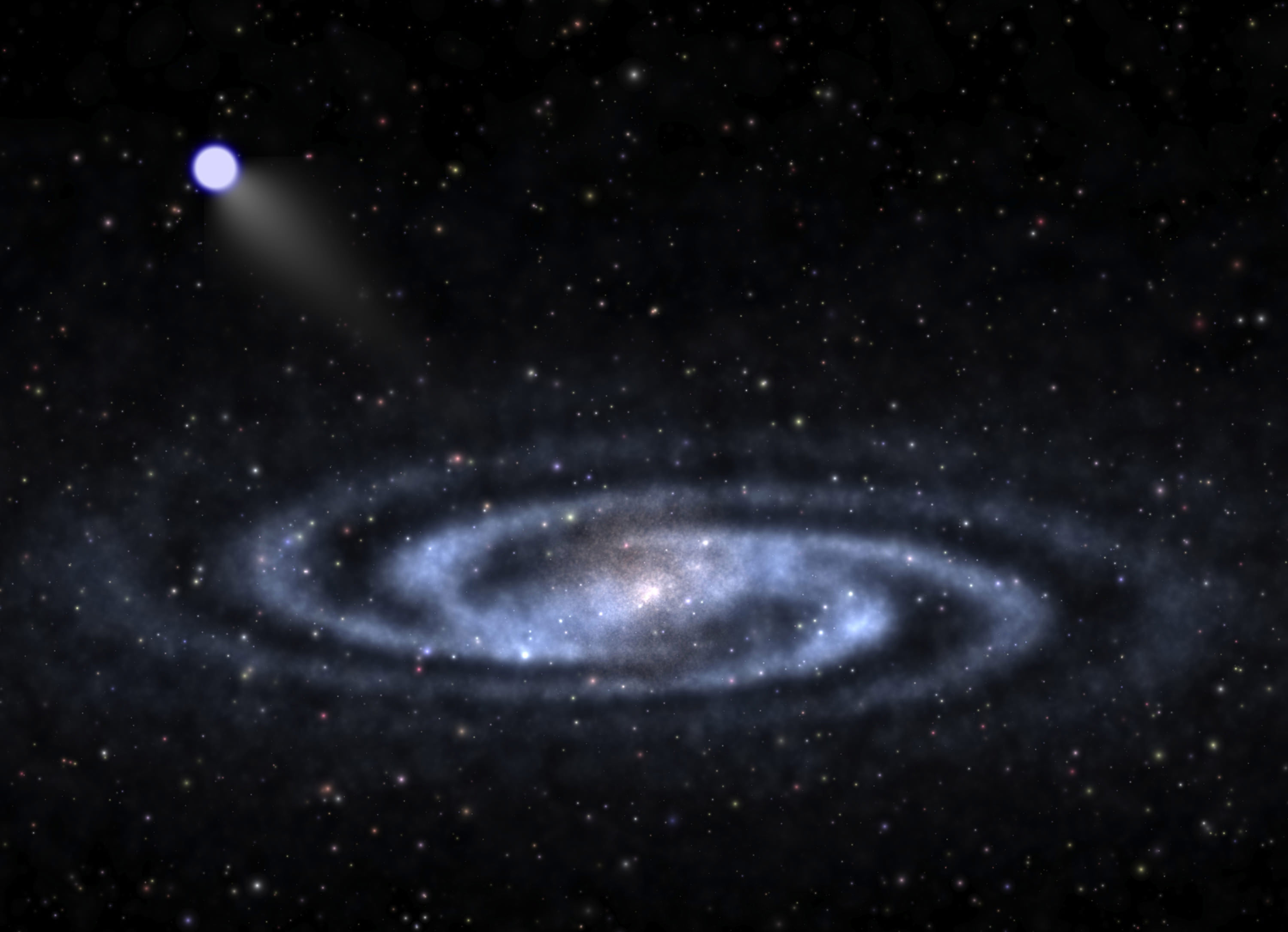Zoom! A star was recently spotted speeding at 1.4 million miles an hour (2.2 million km/hr), which happened to be the closest and second-brightest of the so-called “hypervelocity” stars found so far.
Now that about 20 of these objects have been found, however, astronomers are now trying to use the stars beyond classifying them. One of those ways could be probing the nature of dark matter, the mysterious substance thought to bind together much of the universe.
LAMOST-HVS1 (as the object is called, after the Chinese Large Sky Area Multi-Object Fiber Spectroscopic Telescope that discovered it) is about three times faster than most other stars found. It’s in a cluster of similar hypervelocity stars above the Milky Way’s disk and from its motion, scientists suspect it actually came from our galaxy’s center.
What’s interesting about the star, besides its pure speed, is it is travelling in a “dark matter” halo surrounding our galaxies, the astronomers said.

“The hypervelocity star tells us a lot about our galaxy – especially its center and the dark matter halo,” stated Zheng Zheng, an astronomy researcher at the University of Utah who led the study.
“We can’t see the dark matter halo, but its gravity acts on the star. We gain insight from the star’s trajectory and velocity, which are affected by gravity from different parts of our galaxy.”
The star is about 62,000 light years from the galaxy’s center (much further than the sun’s 26,000 light years) and is about four times hotter and 3,400 times brighter than our own sun. Astronomers estimate it is 32 million years old, which makes it quite young compared to the sun’s 4.5 billion years.

Readers of Universe Today may also recall a “runaway star cluster” announced a few weeks ago, which shows you that the universe is replete with speeding objects.
“If you’re looking at a herd of cows, and one starts going 60 mph, that’s telling you something important,” stated Ben Bromley, a fellow university professor who was not involved with Zheng’s study. “You may not know at first what that is. But for hypervelocity stars, one of their mysteries is where they come from – and the massive black hole in our galaxy is implicated.”
The study was recently published in Astrophysical Journal Letters.
Source: University of Utah

